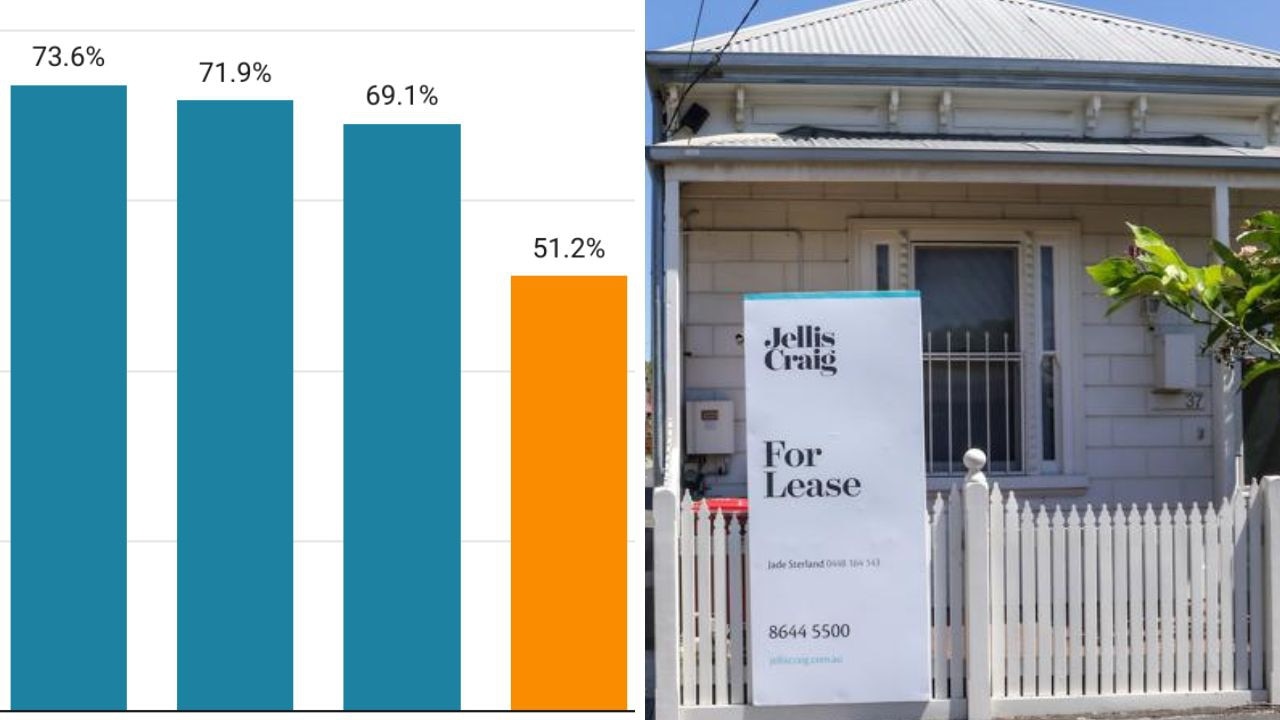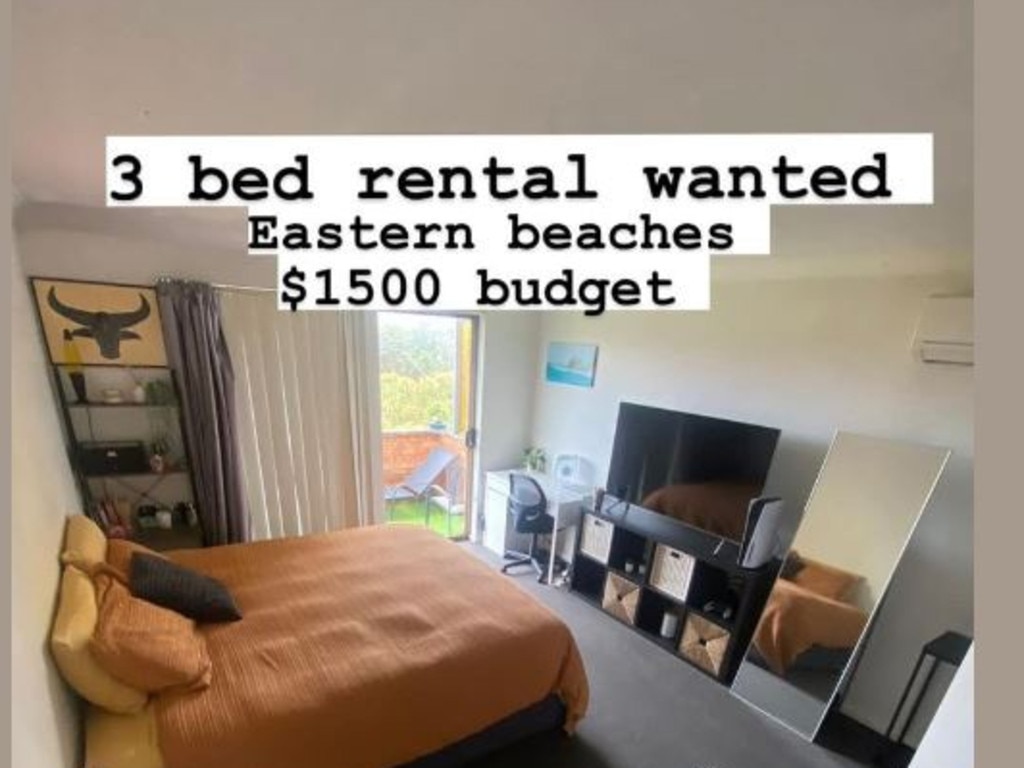Aussie region with 96 per cent rent increase
It’s no secret that rents are skyrocketing but one Australian region has seen a rise of 96 per cent.

As the nation’s housing crisis continues to unfold, it’s worth reflecting on the fact that there are actually two separate issues, with two very different timelines.
There is the continued deterioration in the proportion of homes that are considered affordable to buy. A median earning household is only able to afford 13 per cent of properties, according to an analysis from PropTrack, when in 2000 it with roughly half.
Then there is the lack of rental accommodation and skyrocketing rents. This trend began far later and has taken a much more acute path than the deterioration in affordable housing.

According to figures from SQM Research, in December 2019, the national rental vacancy rate was 2.8 per cent, its equal second highest reading since records began in 2005. As of February, the national rental vacancy rate is just 1.0 per cent.
While a 1.8 percentage point drop may not sound like much, it’s the difference between there being more than enough properties that rents are largely flat and the acute shortage we currently face with double digit increases in rents.
As the nation closed out the 2010s, the national combined asking rent on an aggregate measure of all dwellings was $410 per week (all rental price statistics cited are from SQM).
With the highest national rental vacancy rates in almost two decades and rental price growth far below wages growth, it was clear the rental market at the time was adequately supplied with homes at an aggregate level.
By the time the nation’s borders reopened after Covid, toward the end of February 2022, the rental crisis was already acute, with the national rental vacancy rate falling to just 1.2 per cent and asking dwelling rents nationally up by 21.4 per cent.
Since the end of 2019, asking dwelling rents nationally in aggregate have risen by 51.2 per cent.
Not all regions, towns and cities have fared similarly, with some seeing asking rents rise by far less than wages and others in absolute dire straits with extremely low vacancy rates and rents rocketing significantly faster than the national average would imply.
Asking rents
To put the increase in asking rents since the start of 2020 in perspective, between August 2009 and December 2019, asking dwelling rents rose by 22.7 per cent.
Between the end of December 2019 and April 2024, asking dwelling rents rose by 51.2 per cent. If we extrapolate the rate of rental price growth seen in the data in the years prior to the pandemic (2009 to 2019) on to the present, since the start of the pandemic a bit over four years ago we have seen the equivalent of 20.2 years’ worth of rental price growth (including the impact of compounding).
The largest rise in asking rents in the nation was seen in Western Australia’s Goldfields region, where they rose by 96.0 per cent. In terms of regions outside rural areas, South East Perth saw the largest increase in asking rents, up 87.7 per cent, followed by the Gold Coast Main up 85.8 per cent.
In terms of the lowest growth in asking dwelling rents the ACT Inner North region is the clear winner, with rents up just 5.1 per cent, followed by the ACT Inner South region up by 8.1 per cent. In third place, Central Hobart with asking dwelling rents up by 10.2 per cent.
Rental availability
Despite much of the focus on the rental crisis being placed on the most populous capitals of Sydney and Melbourne, the lowest vacancy rates and tightest rental markets in the country are all located in the smaller capitals.
The title of most tight rental market region in the country goes jointly to North East Perth and Southern Adelaide with a vacancy rate of just 0.3 per cent. In equal second, North West Perth, South East Perth, Northern Adelaide and Western Adelaide, with a vacancy rate of 0.4 per cent.
In terms of which region has seen rental availability tighten the most relative to where it was prior to the pandemic, the race is much more clear cut. With Perth City (the city centre) seeing vacancy rates fall by 4.0 percentage points, followed by Paramatta down 3.0 percentage points and Sydney’s Upper North Shore down 2.8 percentage points.
The outlook
Despite the enormous growth in rents since 2020, the latest figures from SQM show that asking dwelling rents at a national level are up 9.5 per cent in the last 12 months. While rental price growth may moderate, the backdrop of demand continuing to grow significantly faster than supply, appears to assure continued price growth in excess of wages growth for the immediately foreseeable future.
More Coverage
With a greater and greater proportion of the construction sectors resources and manpower dedicated to knockdown rebuilds, renovations and other projects that don’t grow overall housing stock in net terms, the length of the pathway out of the current rental crisis continues to grow.
There are no politically easy answers to either of Australia’s housing crises, but with the ongoing rental crisis set to last for longer than any other in generations, the issue of housing is likely to remain front and centre.
Tarric Brooker is a freelance journalist and social commentator | @AvidCommentator






